How to age brass?
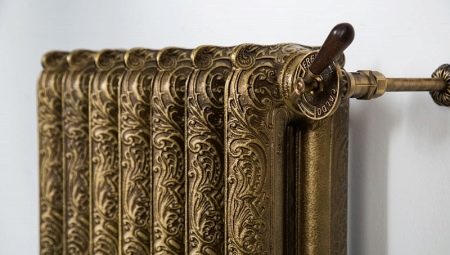
In recent years, it has been very popular patina - the technology of the so-called aging of the surface of any metal by applying special compounds. As a result, metal products outwardly resemble antique objects. In our review, we will tell you about how you can age brass, how to artificially darken brass objects at home.
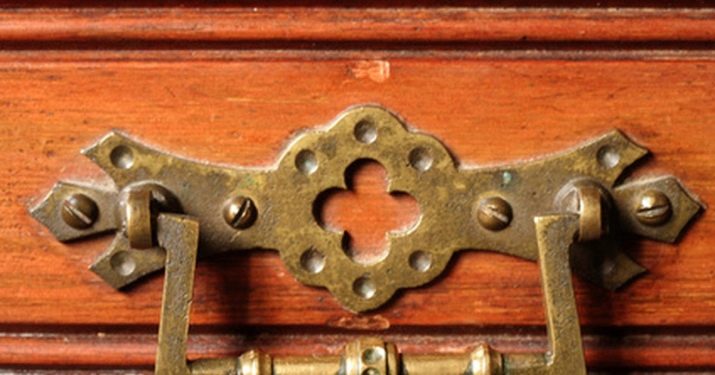
Tools and materials
To begin with, we note that the meaning of the definition of "patina" has absolutely nothing to do with staining techniques.
The term has ancient roots and means a film that appears on a metal surface after prolonged contact with oxygen.
In previous centuries, it took a very long time for brass to oxidize on its own, and the result could be completely unexpected. There are techniques these days that can speed up the process. Moreover, the process itself is so simple that you can perform all the necessary manipulations even at home on your own.
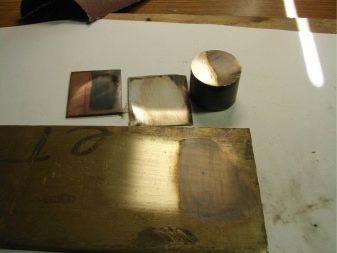
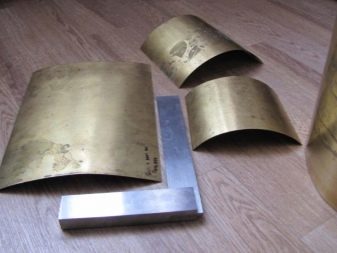
To do this, you will need the following materials and tools:
- powder patina of the desired shade;
- solvent in liquid form;
- brush or sponge;
- glass or plastic containers, metal are undesirable, since they can interact with paint;
- directly the things made of brass that you plan to blacken.
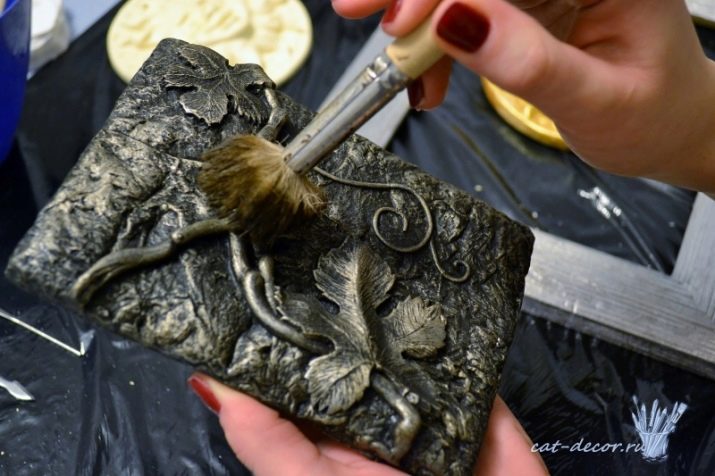
Particular attention should be paid to compliance with safety rules. The fact is that any means for performing patination involve contact with chemical reagents. All work should be done in a well-ventilated area.
If acid gets on the mucous membranes and skin, you should immediately rinse the damaged area with running water, and then sprinkle with gruel from ordinary baking soda.
If acid compounds get into the eyes, as well as if you get burns, rashes and any other pronounced skin changes, immediately see a doctor. Be sure to protect yourself - any work on patinating brass is performed only with protective gloves.
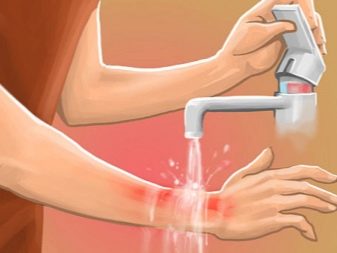
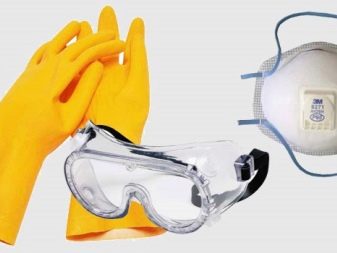
Patination colors
With the help of oxidation of brass, very interesting shading solutions can be achieved. The most common patina shade is considered greenish - it is he who is obtained as a result of the oxidation of copper. Nowadays, the choice of patina colors is very wide and varied; powder can be bought at any building supermarket. The most popular colors are the following:
- aged silver;
- pure gold;
- oxidized copper.
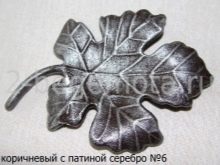

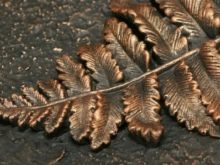
Also, users might like rich and bright colors, for example, red, blue and purple - these tones allow for quite stylish effects on brass.
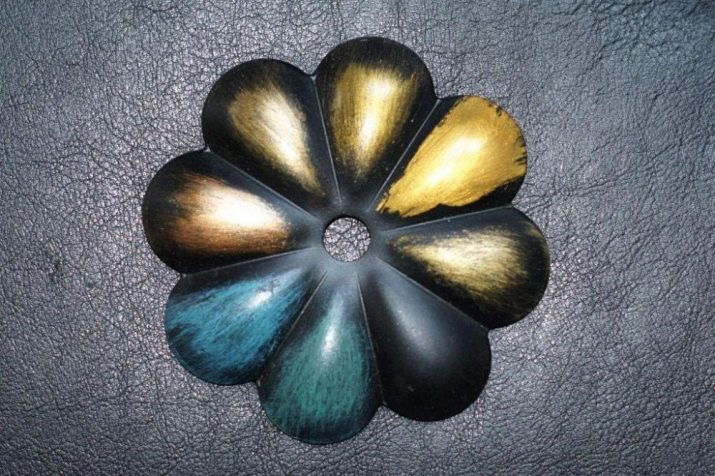
Preparation of products
Artificial aging of brass requires the most serious preparation of a metal surface. First of all, it should be absolutely even, no signs of rust are allowed, since it will not allow high-quality priming of the surface, as a result, the upper layers of the patina will quickly bubble and peel off.
All burrs present on the coating should be removed, cracks and chips are putty and then sanded with fine sandpaper.
Please note that the aging effect looks most beautiful on brass products painted in a dark color... The painted product must dry well, otherwise the patina will not adhere well and the expected effect will not work.
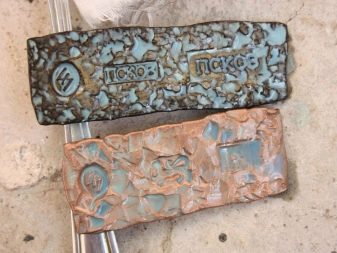
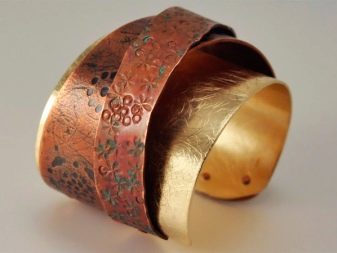
Basic ways
Vinegar
Blackening of brass is often done with vinegar. To do this, perform a few simple steps.
- If the brass surface is covered with a layer of varnish or enamel, then it should be removed first. For this, the metal is kept for some time in a small container with acetone or other solvent. After that, the brass thing is poured with heated water and washed so that the varnish comes off completely.
- If the brass item does not have additional coatings, it will be quite enough to just wash it thoroughly in soapy water.
- Do not start the patination process before the product is completely dry. To speed up drying, you can use a hair dryer. However, in this case, you should first make sure that no remnants of the old decorative coating remain on the brass, otherwise it may catch fire.
- After you have completed all the preliminary work, you can start directly with vinegar. You can either dip the brass garment in the vinegar or dab it on a sponge and treat the garment well. If you want a greenish patina, you can add a little salt to the vinegar.
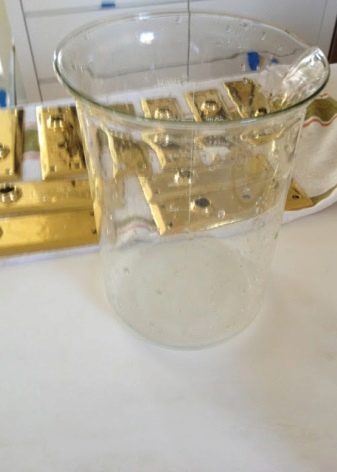
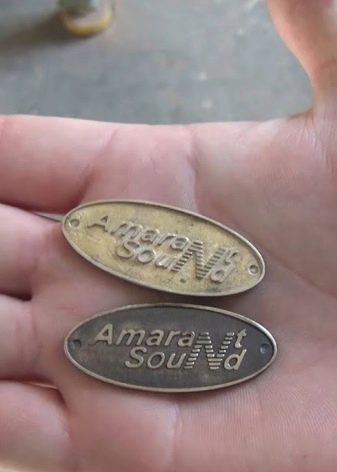
To see the desired effect, brass products should be rinsed in heated water, then delicately dried with a napkin.
Ammonia
For blackening brass is often used ammonia. Before starting the manipulations, you should process brass products with a file, such preliminary preparation allows you to completely clean the metal from dirt. To make patination, you will need ammonia, any container with a hermetically sealed lid, cotton wool and a small lid.
A cotton pad is placed in a small lid, thoroughly impregnated with ammonia and placed in an airtight container, brass products are sent there. After 10–20 minutes, you will notice that the surface of the brass is covered with a patina.
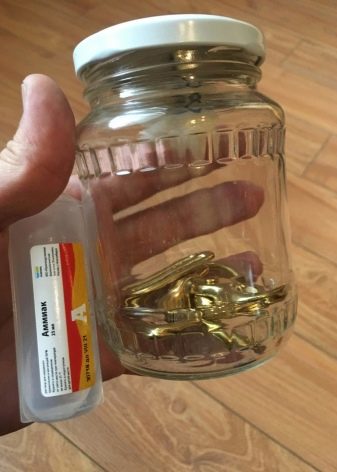
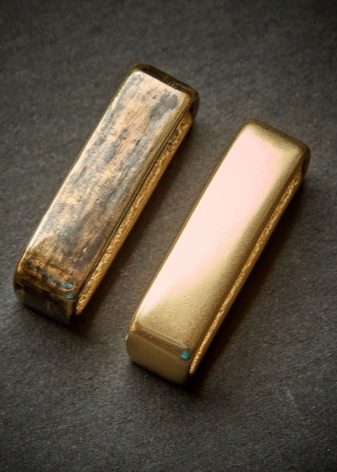
Sulfuric liver
Before blackening the brass it is necessary to cook directly the sulfuric liver. To do this, sulfur powder and potash are mixed in a 1 to 1 ratio, transferred to a tin container and put on low heat. As soon as the mixture begins to melt and darkens, the sintering stage is activated. After that, you should wait a quarter of an hour and remove the tin can from the heat, its contents should cool.
Then you can proceed directly to the manufacture of a solution for aging a brass product: the cooled sulfuric liver is mixed with 3 g of fine salt; this ointment is diluted in 1 liter of water, the resulting solution is thoroughly mixed and copper alloy products are immersed in it. As soon as the metal acquires the expected grayish-green hue, you can take out the product, do not forget to rinse it with water and dry it with a soft cloth.
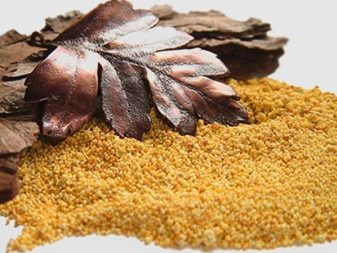
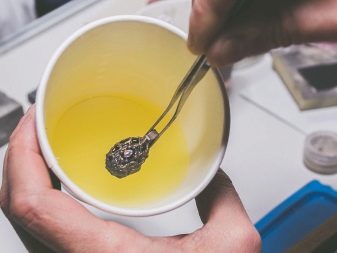
Other methods
To accomplish aging, it is often used acidic liquids.
In particular, a strong oxide film of a saturated dark gray color can be obtained on the coating of a brass product by dipping the product into a composition made of metallic copper and nitric acid.
Some masters carry out oxidation peroxide and copper sulfate.
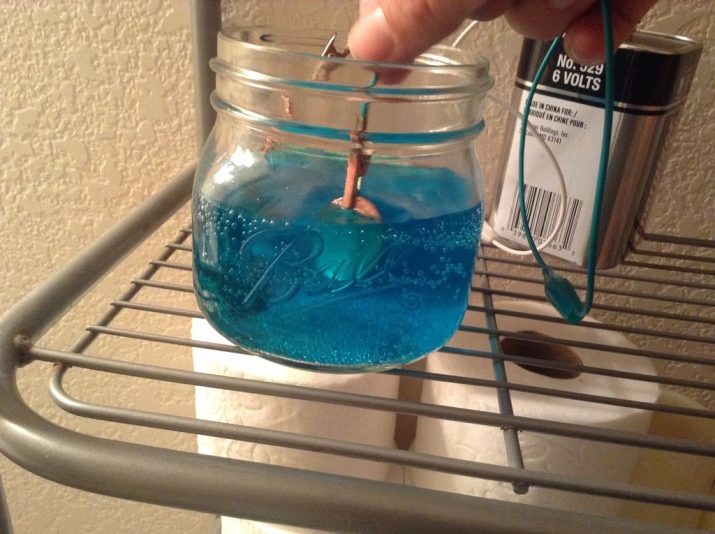
Different formulations are used to obtain different shades.
- For a light brown patina 5 g of 18% ammonium sulfide is stirred in 1 liter of cool water, 125 g of sodium dichromate, 15–20 g of nitric acid and 5 g of hydrochloric acid are added. The solution is gently applied with a brush, left for 4–6 hours, and then washed off. The procedure is repeated two times.
- For a dark brown color scheme 10 g of ammonium persulfate and 50 g of sodium hydroxide are stirred in 1 liter of water. This liquid is heated and brass objects are immersed in it for 5–20 minutes, depending on how saturated the color you want to get. The processing is carried out three times.
- For a golden tone 1 g of copper sulfide, 200 g of milk sugar and 200 g of sodium hydroxide are diluted in 1 liter of water. The mixture is heated for 15 minutes, without letting it boil, then the products are dipped into the composition for a quarter of an hour.
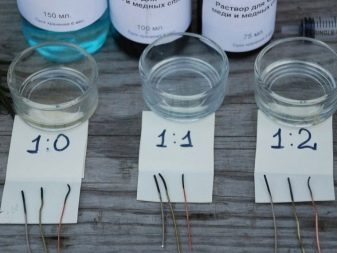
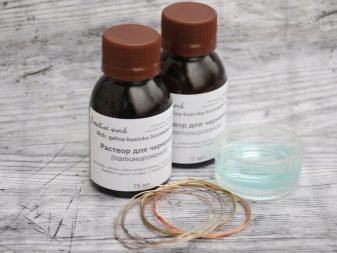
Recommendations
If you do not consider yourself an experienced chemist, then it is best to use ready-made formulations for aging brass or use the simplest methods, for example, with ammonia or vinegar.
The fact is that it will be much more difficult for an ordinary user to maintain certain proportions and not make a mistake in preparing a working solution.
If you have the skills to work with chemicals, then you can try using prepared acid solutions. Avoid any solutions containing hypochlorite, as this substance is difficult to control in a domestic environment, and if handled carelessly, it can be harmful to health.
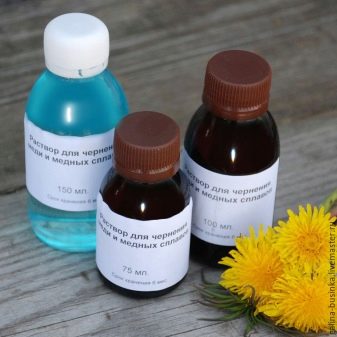

To consolidate the aging effect, you should use paraffin or wax... After some time, when you need to repeat the procedure, these substances will be washed off much faster and easier than varnish. If you have any doubts as to whether your alloy is brass, take it to any pawnshop or antique store. A professional will be able to very quickly determine what kind of metal your item is made of.
The following video will tell you how to age brass at home.








